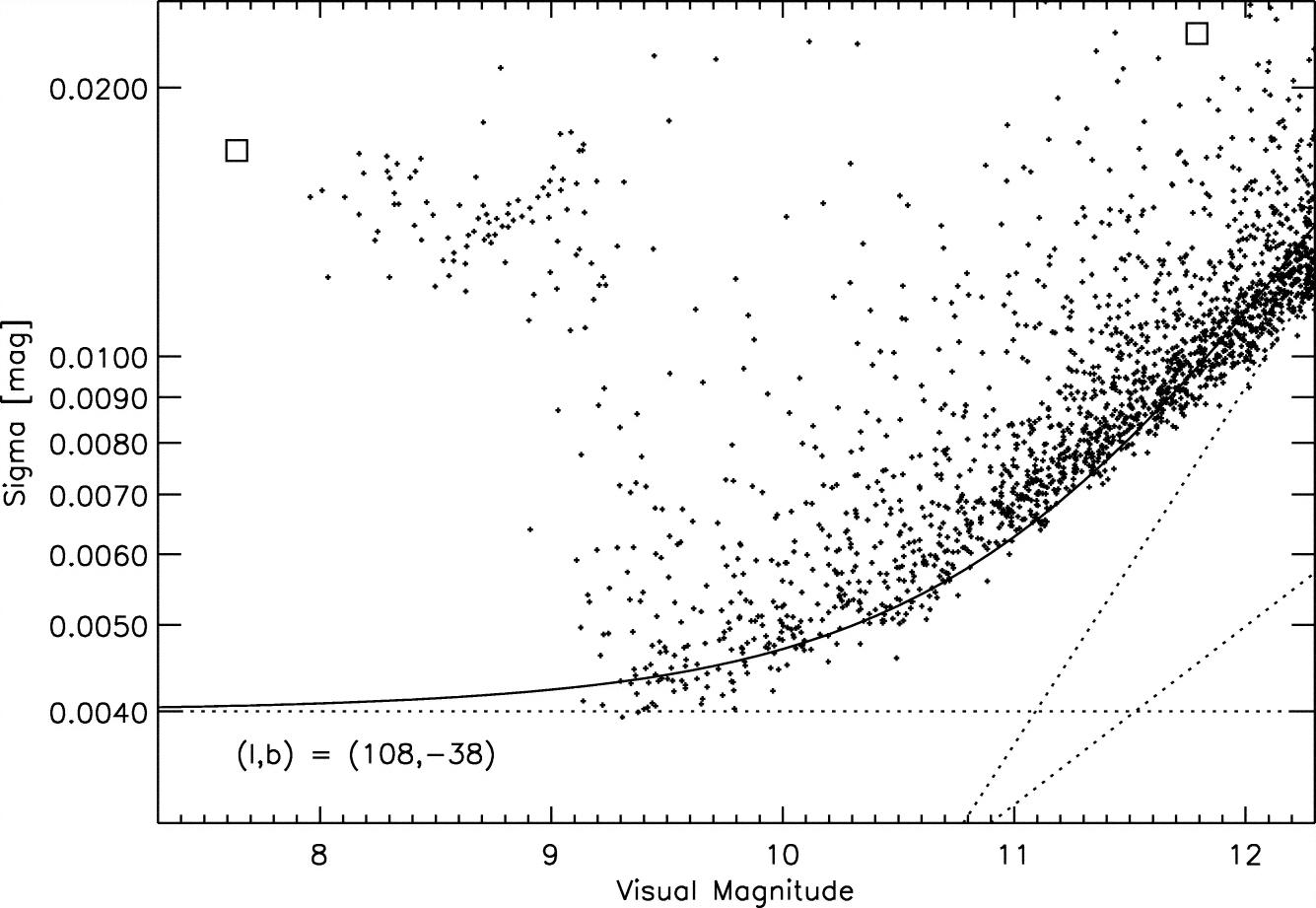Summary details for XO Exoplanet Archive-ETSS Data Sets
Telescope
Two Canon Mark 1 cameras with EF2000 Canon lenses (200mm focal length, f/1.8).
Aperture: 11 cm.
Location: Haleakala, Maui, Hawaii.
Instruments
1024 x 1024 Apogee Ap8p thinned CCD with 24-micron pixels.
Pixel scale: 25.4 arcsec / pixel.
Field of view: 7.2° x 7.2°.
Filter: W(XO) Edmunds Optics Inc NT54-517, flat throughput between 400nm and 700nm.
Observed Region
A 7 x 7 square degree region centered on RA = 240 degrees and Dec = +31 degrees.
Photometry
The XO-DR1 data were obtained in drift-scan mode. Aperture photometry was used for simplicity and reliability. Both cameras were always pointed at the same field to increase signal-to-noise ratio (twice the number of photons) and to provide redundancy for verification and stability purposes. Effective exposure cadence is 10 minutes, exposure time is ~54s. For specific details on calibration and relative photometry, we refer the reader to the paper referenced below, specifically to section 5.4.
The Exoplanet Archive attempted to detect all stars in this data release in the 2MASS catalog by performing a coordinate match search with a radius of 20 arcsec. The resulting 2MASS entry (if available) with the smallest distance was designated a match, and its JHK magnitudes were assigned to the XO counterpart.
Data Ranges
The data parameters fall into the following approximate ranges:
| Field | Min | Max |
|---|---|---|
| HJD of the observation |
2453080.138 | 2453566.054 |
| J 2MASS magnitude | 3.555 | 17.240 |
| H 2MASS magnitude | 2.577 | 16.522 |
| K 2MASS magnitude | 2.324 | 17.056 |
| Total number of stars | - | 2047 |
| Number of epochs | 11 | 3451 |
Figures

Figure 1: Standard deviation σ of the differential instrumental magnitudes estimated by each camera in a 54 s exposure made every 10 minutes, plotted with respect to the visual magnitude of each of the 1874 stars in a representative field at moderate Galactic latitude. Galactic coordinates of the center of the field are indicated. The σ is estimated from > 1000 observations per star, after calibration and iterative rejection of outliers. The expected performance (e.g., Everett & Howell 2001) is plotted as a solid line, which is the quadrature sum of three components: Poisson noise of photons from the sky (steeper sloped line) and the star (shallower sloped line) and a constant fractional error (horizontal line) attributed to scintillation and imperfect calibration. Stars brighter than V ≈ 9 are saturated and have σ ≈ 0.015 mag. Two stars known to exhibit transits, HD 209458 and TrES-1, are illustrated as squares located at their mean brightnesses and transit depths in the V band.
Download Data Sets
| XO summary file | IPAC ASCII format table |
| XO light curves | Download scripts |
Primary References
- "The XO Project: Searching for Transiting Extrasolar Planet Candidates", McCullough et al. 2005 (PASP, 117, 783)




